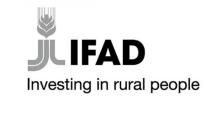Resource information
This paper examines the intersections between youth access to land, migration decisions and employment opportunities using nationally representative and multi-year data from multiple African countries. We document evidence on the evolving dynamics in land distribution and ownership patterns, the effect of land access on youth livelihood choices and development of rental and sales market in the region.
The report highlights six key findings:
#First, a progressively smaller proportion of young people are inheriting land due to land scarcity.
#Second, rural youth who do inherit land will need to wait longer to gain access to it because of significantly longer adult life spans.
#Third, land scarcity has been driving rapid changes in the land ownership and distribution patterns over the past decade and shaping the employment and migration decisions of rural youth.
#Fourth, the share of individual labour time devoted to farming is declining over time across age categories and gender, signifying that continued economic transformation processes are underway in Africa. Nonetheless, farming still accounts for significant shares of individuals’ labour time, particularly between the ages of 15 to 19 years. As young people progress into their 20s and 30s, the share of their work time in farming significantly declines in favour of off-farm employment opportunities.
#Fifth, access to land is an important determinant of the share of the labour time that young people devote to farming activities and their decision whether to migrate out of their home area. Other factors such as education, age of the household head and number of male or female siblings also significantly influenced youth livelihood choices.
#Sixth, we find a strong inverse relationship between participation in land rental markets and the age of household head: younger heads are generally more likely to rent in land than older heads, particularly in countries with relatively active rental markets.
Overall, the analysis suggests that policy actions promoting access to land and security of tenure will significantly shape young people’s engagement in farming and livelihood options. To be successful, such policies will need to recognize and anticipate the impacts of the evolving dynamics in land distribution and ownership trends and develop effective responses that will foster inclusive, competitive and productive agricultural growth. Policies to promote youth access to land and security of tenure are not necessarily intended to keep youth permanently engaged in farming but rather to stimulate dynamic agricultural productivity growth in ways that drive continued economic transformation and diversification.



